#ferguson rifle
Explore tagged Tumblr posts
Text

A brilliant portrayal of British Captain Patrick Ferguson's experimental rifle corps, an ad hoc company raised in 1777 and equipped with Ferguson's famed breech-loading rifles.
#history#british army#military history#18th century#american revolution#american war of independence#revwar#patrick ferguson#ferguson rifle
275 notes
·
View notes
Text

Ferguson Breech-Loading Rifle
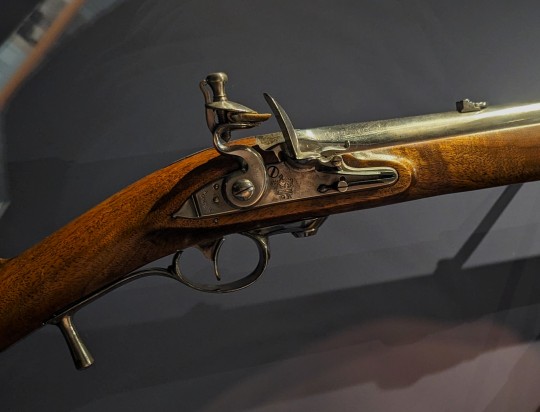
"Ferguson" Breech-Loading Rifle from Aberdeen, Scotland dated to 1776 on display at the Royal Scots Dragoon Guards Museum in Edinburgh Castle, Scotland
These rifles were invented by Lieut-Colonel Patrick Ferguson of Pitfour, Aberdeenshire. Ferguson's improved quick thread breech-loading rifle was an improvement on an earlier invention. He served as a subaltern in the Royal North British Dargoons (Scots Greys) from 1759 to 1762. Ferguson was killed in South Carolina at the Battle of King's Mountain in 1780 during the American Revolutionary War.
Photographs taken by myself 2023
106 notes
·
View notes
Text
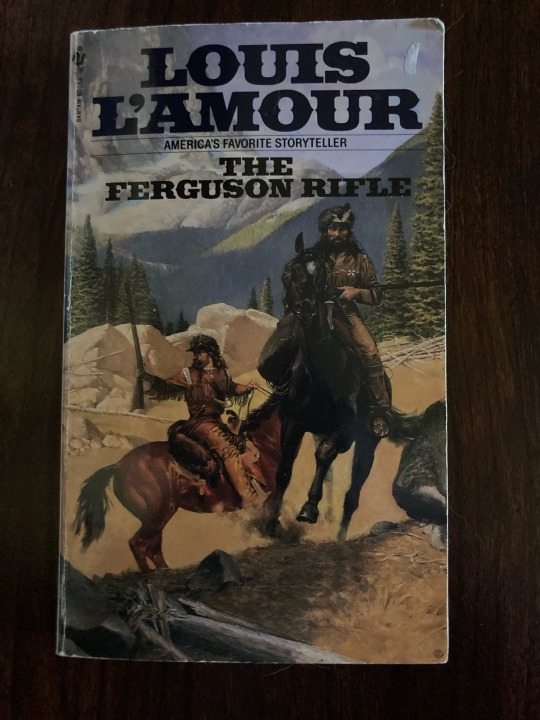
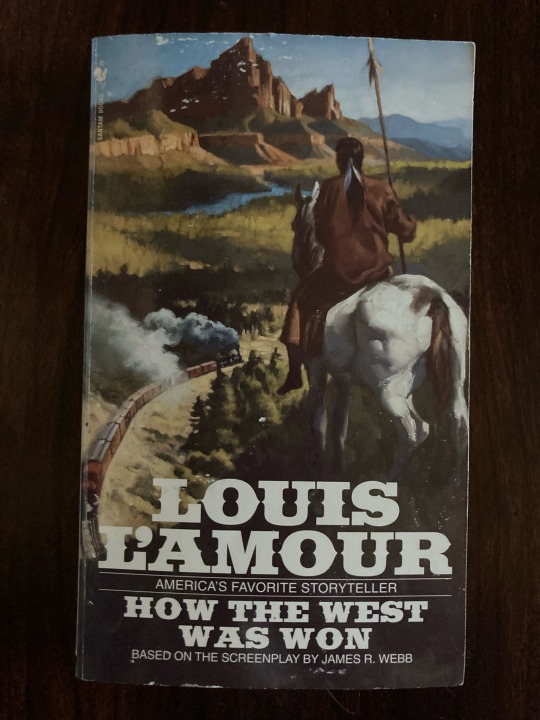
1 note
·
View note
Text
It Ain't About Gun Control
So let's talk guns an' the US Supreme Court, poozers!
On paper, the Supreme Court is a decent idea. Cuz the justices are appointed fer life, they don't gotta campaign, which oughta incentivize them to care only about justice. Cuz they're appointed by Congress, though, they're still tied to a democratic institution. Best of both worlds, right?
This week, the SCOTUS (Supreme Court of the United States fer ya' poozers that ain't political wonks) struck down the ban on bump stocks fer rifles. Now I ain't gonna talk about whether bump stocks should be banned, cuz the news is doin' that ad nauseam already, an' it entirely misses the point.
The point is there ain't no constitutional reason for it. They didn't argue about the Second Amendment. Essentially, they struck down the law just cuz they didn't like it.
That ain't what the SCOTUS is s'posed ta' do. The SCOTUS is s'posed ta' be a check on the power a' Congress an' the President, not a power unto itself. Justices are unelected an' serve life terms, so if they take legislative power unto themselves, democracy goes right out the window.
It's temptin' ta' think this is some kinda new low, an' I do think we oughta be worried, especially with Alito havin' come out an' flat-out said he's a political operative who don't think compromise with liberals is possible. The SCOTUS is key ta' fascist plans to destroy what shreds a' democracy we've got left in this country.
But make no mistake, the SCOTUS has been abusin' its authority fer over 150 years.
Ya' probably know about the infamous Dred Scott decision of 1857, but among leftists, this decision's often part a' the larger narrative about how the US wuz built on slavery. That's true, but I wanna zoom in an' point out that the Dred Scott decision was a clear case a' the court ignorin' existin' law, the constitution, an' the Founding Fathers (racist as they were), an' overturnin' a law just cuz they didn't like it. The two dissenters, Curtis an' McLean, both pointed this out.
There weren't no precedent anywhere ta' strip citizenship based on race. In fact, there wuz the opposite, as black people had been citizens in at least five a' the original states.
There's also a rule in the Supreme Court ta' make rulings as narrow as possible. The majority decided they had no jurisdiction, an' by the Court's rules, the decision shoulda ended there. Instead, the Court violated its rules and issued a sweepin' judgment strippin' citizenship an' the protection a law.
Ya' see this in almost all the Supreme Court's worst decisions. Plessy v Ferguson ignored the 14th amendment, Oliver Wendell Holmes, Jr. pointed out that Lochner v New York was based on economic ideology and not legal principle, Buck v. Bell ignored the 14th amendment, the three dissenting justices in Korematsu v United States tore apart any legal basis for that horrific decision, and toward the modern era Bush v Gore and Citizens United v FEC both showed that the Court would ignore the law ta' push a political agenda.
I ain't defendin' the US Constitution. I'm sayin' that even the flawed checks 'n balances of the constitution are ignored by the Supreme Court, an' have been since the beginnin'.
This is yet another reason why we can't fix nothin' within the system. The SCOTUS won't let victories stand. So organize locally, outside the system, an' we can fix things!
#us politics#politics#us supreme court#supreme court#scotus#gun control#leftism#socialism#communism#anarchocommunism#organize#local organization
7 notes
·
View notes
Photo
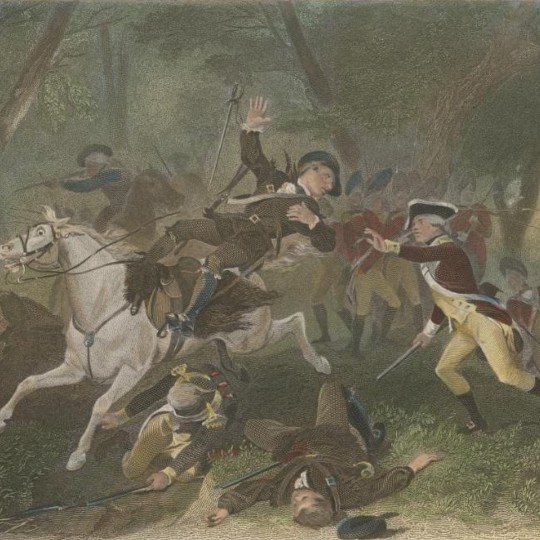
Battle of Kings Mountain
The Battle of Kings Mountain (7 October 1780) was a significant battle of the American Revolutionary War (1775-1783), fought in the backcountry of South Carolina between large parties of Patriot and Loyalist militias. The battle exemplified how the American Revolution could often take on the characteristics of civil war, as most participants on either side were Americans.
The Subjugation of the South
On 12 May 1780, the city of Charleston, South Carolina, fell to the British army after a grueling six-week siege. It was one of the greatest British triumphs of the war so far. Charleston was the largest and most important city in the American South, and its capture provided the British with an excellent base from which to invade the rest of the region. Sir Henry Clinton, commander-in-chief of the British army, did not believe that the subjugation of the South would be a difficult feat. It had long been rumored that the South was replete with Tories (or Loyalists) who felt oppressed by their new revolutionary governments and yearned for the return of royal authority. Clinton believed that the mere presence of British soldiers in the region would trigger a massive revolt of thousands of southern Tories, who would help the soldiers reconquer the South in the name of the king.
Once Charleston fell, Clinton immediately turned his attention to prodding South Carolina's Loyalist population into action. To achieve this, he appointed Major Patrick Ferguson as Inspector of Militia for the Southern Provinces, tasking him with the recruitment and organization of Tory militias. The Scottish-born Major Ferguson seemed to be an excellent candidate for such a task. A career soldier, Ferguson had entered the British army in his teens and had fought in the European theater of the Seven Years' War (1756-1763). He had patented a new kind of breechloading rifle that allowed for a higher rate of fire than the standard flintlock musket, even in wet weather; his British comrades, however, preferred the familiarity of their 'Brown Bess' muskets, and only 200 of Ferguson's Rifles were ever manufactured. Major Ferguson also had a sense of military honor. He claimed that during the Battle of Brandywine (11 September 1777), he had had an opportunity to shoot an American officer that he believed to be George Washington but had declined to do so, believing that it was dishonorable to target officers.
Ferguson was still only a major after his decades of military experience and was eager to prove himself worthy of his new command. Shortly after his appointment as Inspector of Militia on 22 May 1780, he rode to Tryon County, which was heavily populated by Loyalists, and spent the following months recruiting Tory militias. By August, he had raised around 4,000 Tory militiamen from across the South Carolina backcountry; while these numbers were impressive, they fell far short of the total number of Tories that Clinton had expected would rally to the British cause. But Ferguson made good use of what he had. During the summer of 1780, his Tories performed well in a series of skirmishes with Patriot militia that took place in the territory between the fortress of Ninety-Six and the North Carolina border. By the end of August, Ferguson had successfully driven most Patriot partisans from the northwestern part of South Carolina.
Ferguson's success against the Patriot militias was soon bolstered by an even more significant British victory. On 16 August 1780, the main British army under Lord Charles Cornwallis decisively defeated an American army at the Battle of Camden. The battle not only secured British control of South Carolina but also cleared a path for Cornwallis to launch an invasion of North Carolina (Cornwallis had taken over command from Clinton, who had returned to New York to keep an eye on Washington's army in the north). In early September, as Cornwallis prepared to march his army to Charlotte, North Carolina, he ordered Ferguson to enter the state first and begin recruiting and organizing militias of North Carolina Tories. Ferguson was then expected to defend the left flank of Cornwallis' army as it commenced its invasion. The Scottish major quickly rode into North Carolina to fulfill this new mission, eager to help play a role in Britain's subjugation of the South.
Continue reading...
18 notes
·
View notes
Note
"The earliest bullpup firearm known is a heavy bench-rest target rifle made circa 1860 for a Professor Richard Potter by Riviere of London. It weighs more than 6 kg (13 lb 4 oz) and features an octagonal barrel of approximately 20 bore (0.60 in) in calibre, with two-groove Brunswick rifling. It is held in the collection of the British National Rifle Association. [11]" bullpup wikipedia article. with the cited source being Ferguson, Jonathan (2020). Thorneycroft to SA80: British Bullpup Firearms, 1901–2020. Nashville, Tennessee: Headstamp Publishing. pp. 48–49. ISBN9781733424622.
Anon gave a whole MLA citiation, damn
Anyways Richard Potters is my enemy for life
4 notes
·
View notes
Text
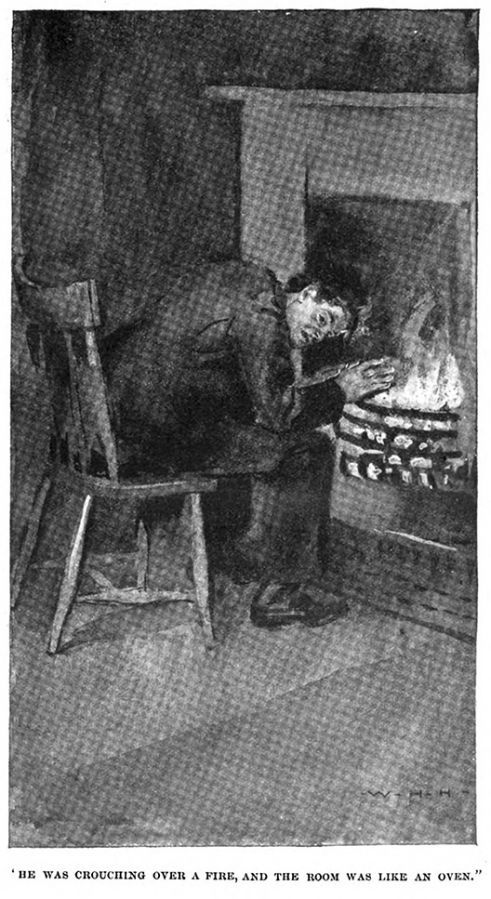

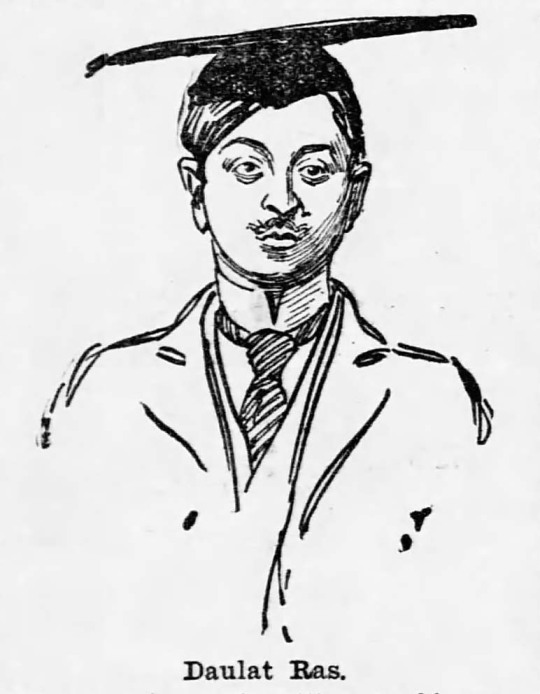



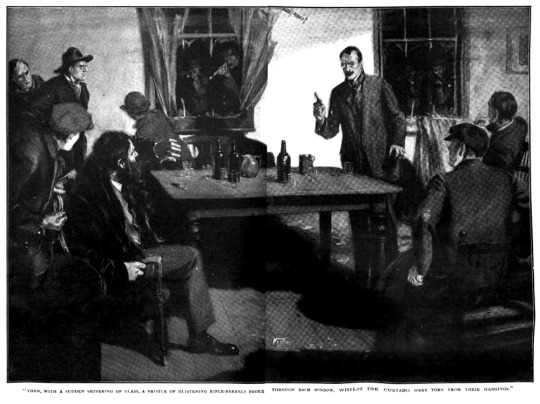





Vote for your favourite, the top 9 will proceed in the bracket. Since theyre all different shapes and sizes, make sure to click into the full views!
Paget Eliminations / Other Artist Eliminations
Full captions and details for each illustration below the cut:
"He was crouching over a fire, and the room was like an oven." W.H. Hyde, Crooked Man (Harper’s Weekly) Characters: Henry Wood
"A mass of documents, which we went over together." FD Steele, Norwood Builder (Collier’s) Characters: John Hector McFarlane, Jonas Oldacre
"Daulat Ras." FD Steele, Three Students (Collier’s) Characters: Daulat Ras
[no caption, and i cant figure out what scene this is meant to be] FD Steele, Wisteria Lodge (Collier’s) Characters: ???
"He sprang forward with clenched hands towards my companion." Gilbert Holiday, Devil's Foot (The Strand) Characters: Holmes, Leon Sterndale
"The inspector was staring with a look of absolute amazement at a paper upon the table. It was the sheet upom which i had scrawled the enigmatic message." Frank Wiles, Valley of Fear (The Strand) Characters: Watson, Insp. MacDonald, Holmes
"Then, with a sudden shivering of glass, a bristle of glistening rifle-barrels broke through each window, whilst the curtains were torn from their hangings." Frank Wiles, Valley of Fear (The Strand) Characters: Scowrers, Douglas/McMurdo
"It took some violence to do that," said Holmes, gazing at the chip on the ledge. With his cane he struck." Alfred Gilbert, Thor Bridge (The Strand) Characters: Sgt Coventry, Watson, Holmes
"Holmes, with that quick curiosity which sprang from his eager mind, examined the collection of South American utensils. When he turned away his eyes were full of thoughts." WT Benda, Sussex Vampire (Hearst’s International) Characters: Robert Ferguson, Holmes
"His air of romance and mystery put the whole sex at his mercy." JR Flanagan, Illustrious Client (Collier’s) Characters: Baron Gruner
"Holmes flung open the door and dragged in a gaunt woman, whom he had seized by the shoulder." FD Steele, Three Gables (Liberty) Characters: Susan Stockdale, Holmes
"He tore up one of his wife's photographs in my presence. 'I never wish to see her damned face again!' he shrieked." FD Steele, Retired Colourman (Liberty) Characters: Josiah Amberley, Watson
#acd holmes#sherlock holmes#tumblr bracket#sherlock holmes illustrations#elim poll#oa elim#if anyone has any ideas on what that wisteria lodge scene is meant to be lmk!#polls full bracket
14 notes
·
View notes
Text
I went down a rabbit hole...
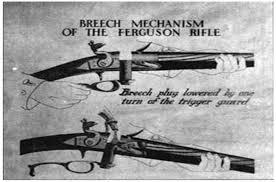
The Ferguson Rifle used a breech load rather than a muzzle load, which gave it an amazing 6-10 shots per minute. In comparison, the standard issues Brown Bess, used by the majority of troops on both sides of the Revolutionary War, only managed 3-4 shots per minute.
The Ferguson rifle also had almost double the range of the Brown Bess. However, the new gun was expensive and slow to produce. They also broke down in combat, particularly the wood stock around the lock mortise.

1 note
·
View note
Text

British Ferguson breach loading rifle. First breach loader introduced into military service. If adopted more widely it would have been a game-changer. But at double the cost of a 'Brown-Bess' musket and expensive powder it was down to cost and the 100 rifles issued were returned to store.
Isaac de la Chaumette invented this form of breech-loading action in 1700 and patented it in England 1721. Helped by M. Bidet a French Huguenot living in the England. The design was improved by him in adopting a quick thread that allowed the plug to be withdrawn by a single turn of the trigger-guard, as also did John Warsop and Captain Patrick Ferguson was granted Patent No. 1139 for his improved version in 1776. Breech loading firearms are nothing new one of the earliest examples of a screw thread in Britain dates back to 1667 by Jonabed Holloway. (FTP)
3 notes
·
View notes
Text
A federal appeals court ruled Tuesday that a state law requiring Marylanders to obtain a handgun qualification license before purchasing or receiving a firearm is unconstitutional.
“This is a significant ruling for the Second Amendment and every American who cherishes our constitutional freedoms,” said Randy Kozuch, the executive director of the National Rifle Association Institute for Legislative Action, in a statement.
In a split 2-1 decision, a three-judge panel of the U.S. 4th Circuit Court of Appeals found a portion of the state’s Firearm Safety Act of 2013 to be unconstitutional. That part of the law prohibits Marylanders from purchasing, renting or receiving a handgun unless they have received a valid handgun qualification license.
It is also illegal to sell, rent, gift or transfer a firearm to a person without a license under that law.
To receive a handgun qualification license, applicants must be Maryland residents aged 21 or older. They are required to pass a firearm safety course and undergo a background check to ensure they aren’t prohibited from owning a gun under state or federal law. The licenses are issued by the Maryland State Police. The application review process can take up to 30 days.
The case, brought on behalf of the firearms rights organization Maryland Shall Issue, two individual plaintiffs and a gun store, was filed initially against former Gov. Larry Hogan, a Republican. Hogan met his term limit earlier this year and was replaced by Democratic Gov. Wes Moore, who is now considered the defendant in the case.
Moore said he is “disappointed” by Tuesday’s decision.
“This law is not about stripping away rights from responsible gun owners — it’s about every Marylander having the right to live free from fear,” the governor said. “I am determined to do more than just give thoughts and prayers and attend funerals — and that’s why this law is vital to our administration’s commitment to keeping guns out of the wrong hands and saving lives.”
Baltimore Mayor Brandon Scott, a Democrat, said he is “incredibly frustrated,” and that Tuesday’s ruling “threatens the safety of our communities.”
State Senate President Bill Ferguson, a Baltimore Democrat, called the ruling “crazy.”
“Every responsible gun owner supports basic firearm training and keeping guns out of criminals’ hands,” Ferguson said. “This decision will unequivocally lead to more gun violence and firearm-related deaths.”
The law was upheld when it was initially challenged in 2016.
Tuesday’s opinion, written by U.S. Circuit Judge Julius Richardson, reversed that ruling. Richardson, an appointee of former President Donald Trump who clerked for former Supreme Court Chief Justice William Rehnquist, cited the U.S. Supreme Court decision in the New York State Rifle and Pistol Association v. Bruen, which overturned New York state’s gun licensing policy and disrupted the licensing process in Maryland, California, Hawaii, Massachusetts, New Jersey and Rhode Island.
The state has two weeks to ask for a review of the decision by the entire 14-judge 4th Circuit. It also may ask the Supreme Court to review the decision.
The New York law that the Supreme Court deemed unconstitutional in 2022 required people applying for permits to carry guns in public to demonstrate “proper cause” to successfully receive a concealed carry permit.
In his opinion, Richardson wrote that the Bruen decision “effected a sea change in Second Amendment law” and that, in order for the law to be constitutional, the state must demonstrate that the challenged law is similar enough to “a historically recognized exception to the right to keep and bear arms.”
U.S. Sen. Chris Van Hollen, a Maryland Democrat, said that the ruling is “yet another disastrous consequence of the absurd new Supreme Court standard that today’s gun laws need to match those from centuries ago.”
In a statement issued after the release of the opinion, William Taylor, the deputy director of Second Amendment litigation at Everytown Law, a group that advocates for gun safety, said that the now-stricken licensing process is “not only common sense, it is entirely consistent with the Second Amendment and the new test established by the Bruen decision.”
“While today’s decision is a setback to public safety, we fully expect that the full 4th Circuit, or if necessary, the Supreme Court, will reverse this dangerous decision and uphold Maryland’s critical gun safety law,” he said.
The three-judge panel ruled Tuesday that the state’s argument for upholding the law did not meet the Bruen case’s historical standard.
“The 4th Circuit Court’s decision to overturn Maryland’s restrictive gun license law sends a clear message: Law-abiding Marylanders’ fundamental right to self-defense must not be infringed,” Kozuch said.
4 notes
·
View notes
Photo
Apologise
E. Abel, 2014
The year is 1955.
A fourteen-year-old boy
Named Emmett Till
Winks at a white woman in Missouri.
Days later
His body washes up
Soaked
Barely recognizable.
When it's finally identified
With its beaten black face
Smashed to the point
Where it's hard to think this kid
Ever had a name
It's sent to his mother
Who chooses
Not to cover his face at the funeral
To leave the coffin open
So all can see
The bruised and rotted flesh
Swollen discolored and bloody
With one eye dangling from its socket.
Thousands of people cry.
The pictures hit the news.
Emmett Till and his mother Mamie
Are names known across the country
And the men who killed him
Are found not guilty.
-
The year is 1964.
A young man
Named James Earl Chaney
Is working with the Congress of Racial Equality
As a civil rights worker in Mississippi.
He advocates voter registration
Trying to get black people
The representation they deserve.
The KKK has burned a church for blacks.
Chaney is investigating.
His bus is stopped
By a group of men
In pointed white hats and masks.
For weeks people search
Until his body is found,
But only because he went missing
With two white men.
The dozens of other blacks who have gone missing
In the same way
In the same town
Are never searched for
And the Klan members don't go to prison.
It takes 40 years
Before the man who organized his killing
Is sentenced
For manslaughter.
Four years later
A great leader is shot.
-
The year is 2012.
A boy of seventeen
Named Trayvon Martin
Is walking around Sanford Florida
Wearing a hoodie
Getting candy and juice
At a convenience store.
A neighborhood watch volunteer
Sees him slouching
His hood up over his head.
A gun is drawn and fired.
Trayvon keels over.
His pictures are released to the press
Who debate the issue more heatedly
Than the presidential race.
Rallies and protests ensue,
Millions sign a petition for the volunteer's imprisonment
But Florida says "Stand Your Ground"
And Zimmerman walks free.
-
The day is August 9th, 2014.
In Ferguson, Missouri
An eighteen-year-old
Named Michael Brown
Is walking down the street with his friend.
A police officer pulls up and yells for them to get on the sidewalk;
The two keep walking.
The officer pulls up next to them
Yelling again.
Suddenly a shot is fired from inside the car.
It grazes the teen's side
He and his friend take off running
The cop chases.
The friend hides behind a car
Fearing for his life.
A second shot hits the already wounded boy
The teen turns to his attacker instead.
Michael gets down on his knees
An innocent
Surrendering without a fight
In the hope that his enemy will have mercy
"Hands up
Don't shoot"
He cries.
BANG
To the head
BANG BANG BANG
Bullets hit the insides of his arms
His chest
The body lays in the street for hours
Police pick it up later in a van
The witnesses all say the same thing.
-
That night the protests start
Saying the same thing Michael said
"Hands up
Don't shoot"
"No justice
No peace"
Not a gun is drawn by the protestors
No threats are made.
The next night
Tear gas is thrown
As a crowd control tactic
By police.
Within a week
Armored vehicles and assault rifles
Have been dealt to the suburban unit
The people still protest in peace
Suffering burning eyes
And rubber bullet wounds
For justice
And Darren Wilson gets away with murder.
-
It has been sixty years
Since the death of Emmett Till
Fifty years since the deaths of J. E. Chaney and Martin Luther King. Jr
Two years since Trayvon Martin
And still one must wonder
What America truly thinks
When it says
All its people are born equal
If the life of a black teenager
Is worth less than the box of cigars he supposedly stole,
When those who are supposed to protect us
Can murder innocents
And walk away unscathed.
We may be the home of the brave
But the United States
Is still not
The land of the free
For anyone whose skin
Is darker than the sand on the beach,
We cannot say we stand for justice
Until all murderers sit behind bars
Instead of in front of their televisions
In the guise of a police officer.
America is crippled
Until it can stand united and say,
To the dark children
Whose parents have been fighting the same fight
For the last four hundred years
And have yet to gain their equality,
Until it can say to them
"I'm sorry."
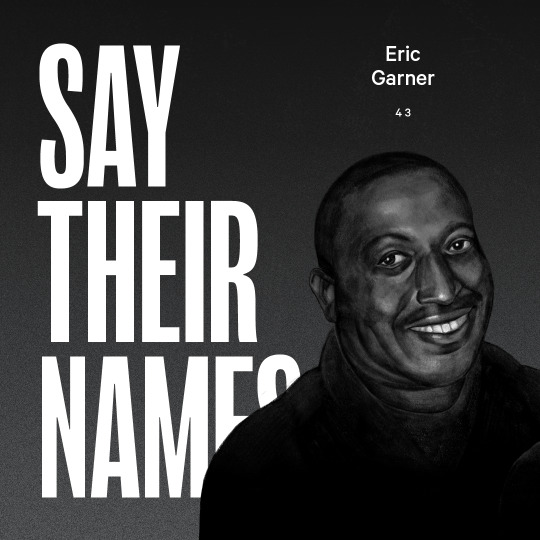
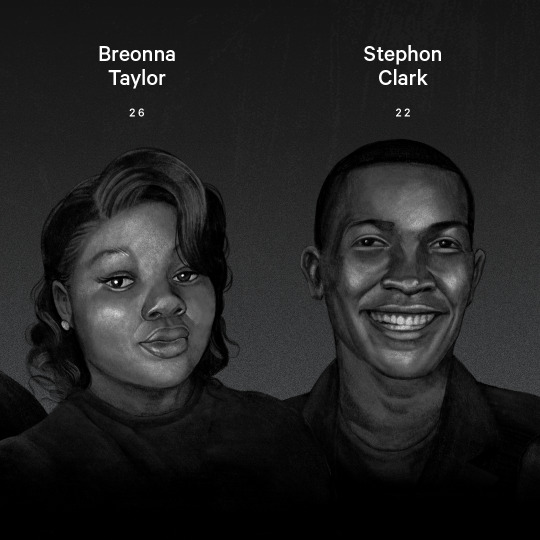
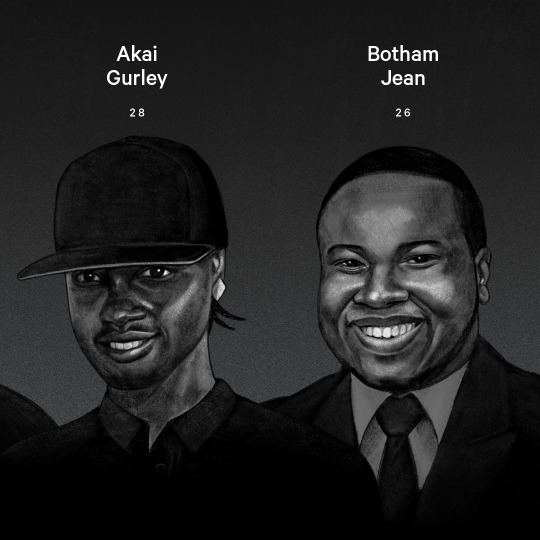
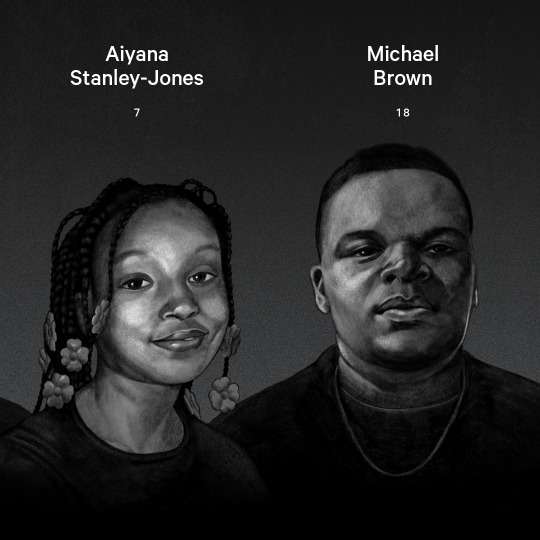

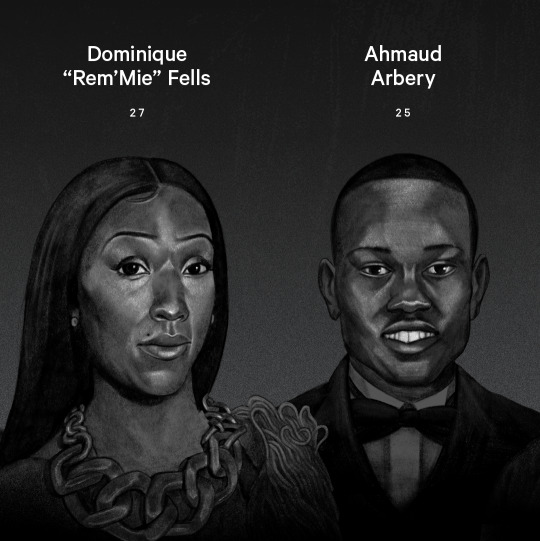
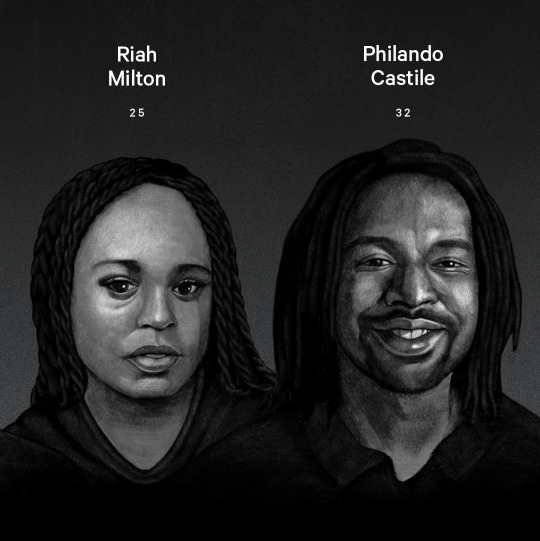
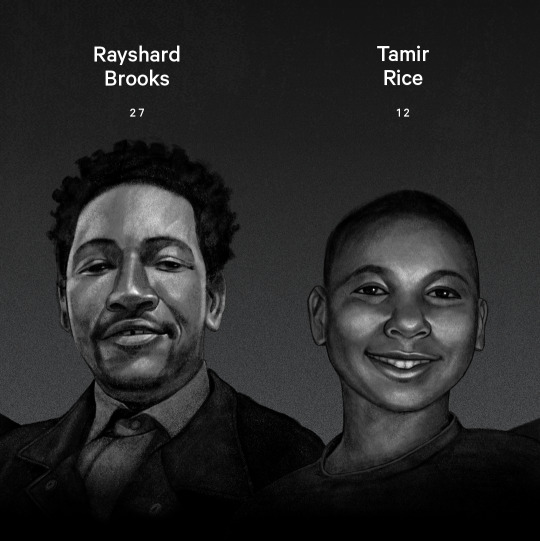
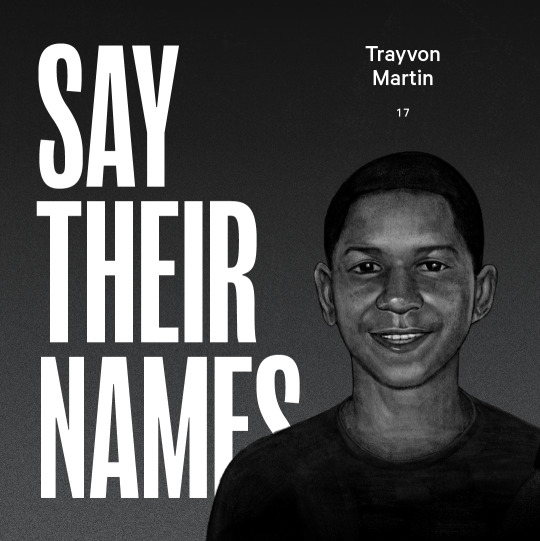
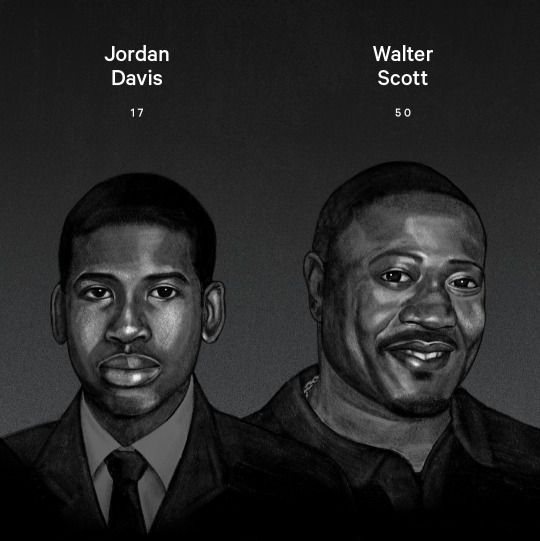
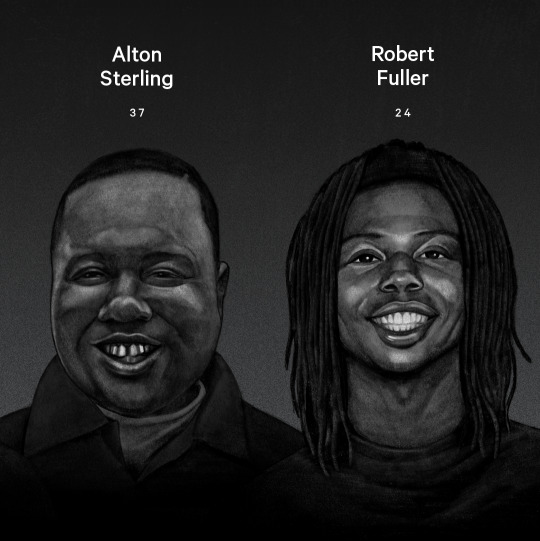
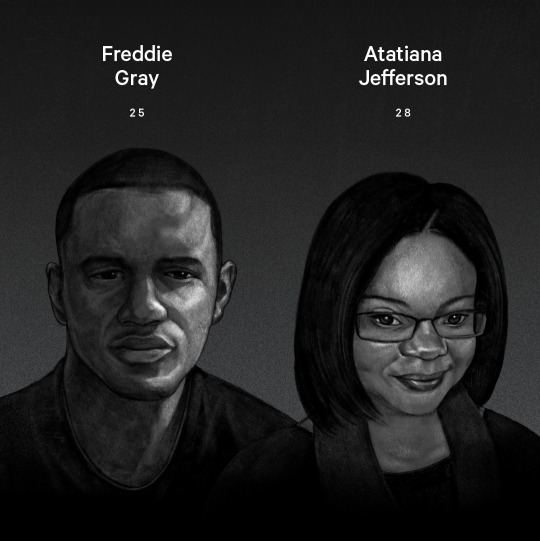
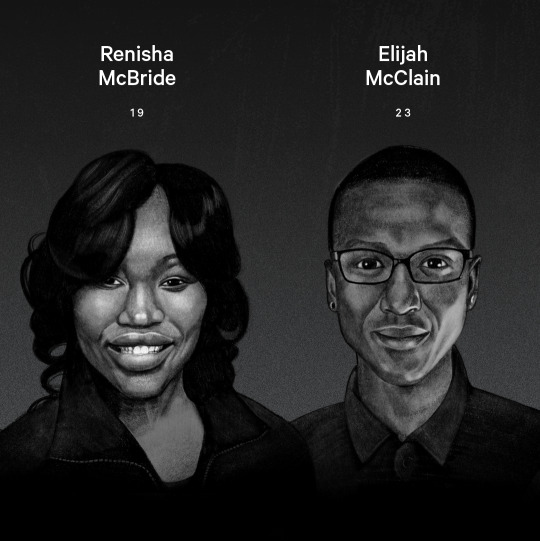
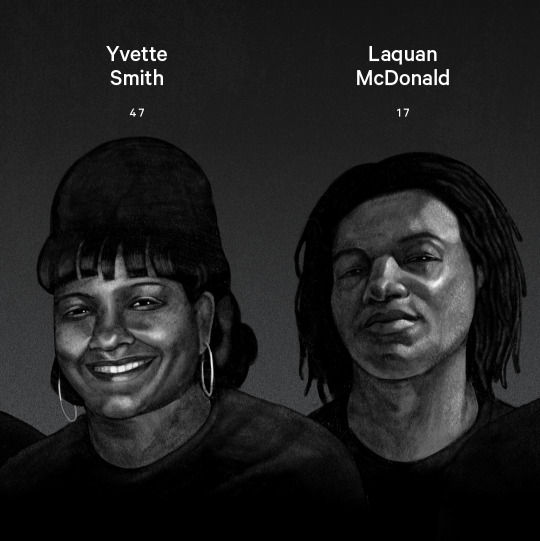
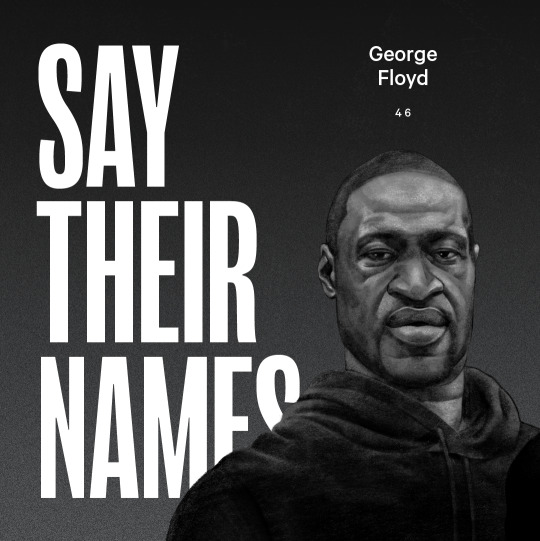
‘Race and racism is a reality that so many of us grow up learning to just deal with. But if we ever hope to move past it, it can’t just be on people of color to deal with it. It’s up to all of us – Black, white, everyone – no matter how well-meaning we think we might be, to do the honest, uncomfortable work of rooting it out. It starts with self-examination and listening to those whose lives are different from our own. It ends with justice, compassion, and empathy that manifests in our lives and on our streets.’ — Michelle Obama
#i wrote this when i was 15 just after the news broke#I hate that its still relevant#and that we can now add a decade to all of those year counts and nothing has changed#and the apology is only the beginning#then comes restitution
144K notes
·
View notes
Text
the rogue nation opera scene is sexy for many reasons (rebecca ferguson) but especially for the alto flute sniper rifle because i was a flute player who wanted my band director dead on many occasions so that's like an ultimate fantasy gadget
0 notes
Text
24th March 2025.
𝐒𝐮𝐧𝐝𝐚𝐲 𝟐𝟒𝐭𝐡 𝐌𝐚𝐫𝐜𝐡 𝟏𝟗𝟕𝟒. Lena slipped down to No 17 on the Radios 1 & 2 Top Twenty show. She appears at about 9 mins 40 secs in.
𝐓𝐡𝐮𝐫𝐬𝐝𝐚𝐲 𝟐𝟒𝐭𝐡 𝐌𝐚𝐫𝐜𝐡 𝟏𝟗𝟕𝟕. The Harborough Mail gave Air Love a good review.
𝐅𝐫𝐢𝐝𝐚𝐲 𝟐𝟒𝐭𝐡 𝐌𝐚𝐫𝐜𝐡 𝟏𝟗𝟕𝟖. The Fulham Chronicle had a cartoon of Lena & Bonnie on it's television page.
𝐅𝐫𝐢𝐝𝐚𝐲 𝟐𝟒𝐭𝐡 𝐌𝐚𝐫𝐜𝐡 𝟏𝟗𝟕𝟖. Most newspapers listed Lena & Bonnie on their television pages. Southern newspapers also listed Our Show on Saturday where they were guests. Luckily for the north we had TISWAS rather than Our Show.
𝐓𝐮𝐞𝐬𝐝𝐚𝐲 𝟐𝟒𝐭𝐡 𝐌𝐚𝐫𝐜𝐡 𝟏𝟗𝟖𝟏. In Harrow Midweek, The Jewish Welfare Board advertised a bazaar at the Cumberland Hotel on Sunday 29th March. The chance to meet Lena was one of the attractions.
For a devout Catholic she seemed to give more of her time freely to Jewish charities than to Christian ones.
𝐒𝐮𝐧𝐝𝐚𝐲 𝟐𝟒𝐭𝐡 𝐌𝐚𝐫𝐜𝐡 𝟏𝟗𝟖𝟓. The Sunday Mirror reported that Lena would be doing a summer season in Blackpool with Cannon & Ball, and also that she would be on TV the following Sunday, ( A Royal Night Of 100 Stars).
𝐓𝐡𝐮𝐫𝐬𝐝𝐚𝐲 𝟐𝟒𝐭𝐡 𝐌𝐚𝐫𝐜𝐡 𝟐𝟎𝟏𝟏.The Campaign For Truth published Death in a white coat. In the section called ‘It continues today’ there is a paragraph about Lena.
Death in a White Coat
Published by The Campaign For Truth, 24th March 2011.
The quackery of psychiatry has been the target of many human rights groups over the years. Here, The Mind Game author Phillip Day highlights how psychiatry has devastated not just ordinary lives, but finished the careers of some of our best loved stars.
Psychiatry’s unproven philosophies and treatments have wrought far-reaching effects, not just in the lives of ordinary citizens, but in the high-profile world of pop-culture, mass entertainment and the media. It is perhaps in Hollywood more than anywhere else where we can get a picture of the devastation psychiatry has wrought on the gullible - Heath Ledger’s death just another in a long line of tragic, real-life scripts.
During the first half of the 20th century, Hollywood and the arts industry became seduced with the new 'mental health’ ethos pushed by Freud and others. By the 1960s, language itself became peppered with 'getting my head together’, 'doing my head in’, 'love and peace, dude’, 'freaking out’, 'far out, man’ and 'chill’. Even by 1940, the psychiatrist’s many portrayals in movies had elevated the 'shrink’ to a god-like status in the eyes of the public. Always the pipe-smoking benevolent 'father’, bestowing wisdom and chemicals into the ears and mouths of his 'children’, the psychiatrist was in his element. The Hollywood strategy was wildly successful. US National Institutes of Health (NIH) grants for psychiatric research alone in America rocketed from under $10 million in 1957 to around $50 million by 1963 - an increase of 580% in just six years. Between 1963 and 1995, the funding exploded almost 900% from $60 million to just under $1 billion.
Lifestyles of the rich and famous
Many stars have owned up to needing drugs to get by. Singer Del Shannon (Charles Westover) thought the Prozac prescribed to him by his psychiatrist would “…help me over the hump I’m in.” His wife Leanne “…watched him turn into somebody who was agitated, pacing, had trembling hands, insomnia and couldn’t function.” On 8th February 1990, after taking Prozac for just 15 days, Charles Westover shot himself in the head with a .22 calibre rifle.
Princess Diana and Sarah Ferguson both admitted using the 'liquid sunshine’ drug, Prozac, Diana becoming the subject of huge media speculation over her drug use. Royal author Andrew Morton’s controversial book, Diana: Her New Life, detailed her catastrophic mood-swings and alleged suicide attempt on board a royal flight, where she had attempted to slash her arms, smearing blood over the walls and seats before being restrained.
Lady Brocket, Libby Purves, Al Pacino, Roseanne Barr and Mariella Frostrup are among many who have been some-time users of Prozac. INXS pop-frontman Michael Hutchence died in November 1997 in an apparent hanging suicide. His song-writing partner, Andrew Farriss, attributed the death to Prozac and alcohol. The actor and comedian Chris Farley died aged 33 after a four-day alcohol and drug binge. Prozac was present in his blood. Don Simpson, co-producer of Hollywood blockbusters such as Beverly Hills Cop, Top Gun and Crimson Tide, died in 1996 aged 52. Police searching Simpson’s Bel Air estate in Los Angeles discovered thousands of tablets and pills lined up neatly in alphabetical order in his bedroom closet. They later discovered that Simpson had obtained over 15,000 psychiatric amphetamines, tranquillisers and sedatives from 15 doctors and 8 pharmacies.
Have you noticed how, in the movies, the psychiatrist always wins against the 'disease’? The reality, however, especially for the rich and famous seduced by the psychiatrist’s pharmacopoeia, is often tragically different.
Marilyn Monroe: A young Norma Jean, caught up in the web of drugs and film industry pressures, turned to psychiatry to alleviate her problems. One of Marilyn’s psychiatrists was Dr Marianne Kris, who received Monroe five days a week for therapy. After a particularly nasty session, Kris committed Marilyn Monroe to a mental institution where she was locked in a padded cell for two days. Monroe pounded the door hysterically until her hands bled. After her release,
she fired Kris.
Dr Ralph Greenson was Monroe’s psychiatrist in the final years. Still ensuring the actress remained on her barbiturates, on 4th August 1962, after a six-hour therapy session with Greenson, Marilyn Monroe was found by her housekeeper Eunice Murray, naked and sprawled across her silk sheets. Death had been delivered from Greenson’s barbiturate bottle on her nightstand at the age of 36.
Vivien Leigh: Hollywood actress Vivienne Leigh’s hysterical outbursts were well known in the industry. After filming of Elephant Walk in Ceylon was constantly interrupted by Leigh’s frequent losses of control, wanderings in the night and hallucinations, now widely believed to be caused by a combination of her TB medication and heavy drinking, her husband, film legend Laurence Olivier, became concerned for her mental well-being and repeatedly pleaded with the actress to 'seek help’.
Vivien was persuaded to be flown to England for 'treatment’ at the Netheren psychiatric hospital. Her treatments included being packed in ice, a diet of raw eggs and repeated electroshocks. While being treated on location as an outpatient in Warsaw, she performed with a splitting headache. Burn marks from the electroshock were visible on her head.
Olivier finally divorced her in despair in 1960. Even though it was widely recognised that physical illnesses often produce psychiatric-like symptoms, Vivien Leigh’s long-running tuberculosis was relegated in favour of her psychiatrists continuing to diagnose the Hollywood star with various mental disorders. On 7th July 1967, after her TB had spread untreated to both lungs, Leigh was found lying dead on the floor. Choking on her own liquid, she had drowned.
Ernest Hemingway: Believed to be another 'mentally tortured’ genius, Pulitzer and Nobel Prize-winning author Ernest Hemingway was given over 20 electroshocks by his psychiatrists to cure him of his 'mental illness’. In July 1961, just two days after leaving the famous Mayo psychiatric clinic, Papa Hemingway put a shotgun barrel to his head and pulled the trigger.
Frances Farmer: Hollywood starlet Frances Farmer was typical of many rebellious stars of her era who lived life in the fast lane. After starring in the prophetically named No Escape in 1943, she was involved in a drunken brawl and arrested. Frances was placed into the custody of psychiatrist Thomas H Leonard, who diagnosed her as “suffering from manic-depressive psychosis - probably the forerunner of a definite dementia praecox” - a diagnosis later described by doctors as 'pure gibberish’.
Farmer was transferred to the screen actor’s sanitarium at La Crescenta, California, where she was given at least 90 insulin shocks, finally escaping from the institution in terror. Her mother later signed a complaint against her and she was re-committed into custodial care in March 1944. At West Washington State hospital in Steilacoom, her psychiatrists gave her repeated ice baths and electroshock sessions in an effort to break her will. Mental health watchdog The Citizen’s Commission on Human Rights (CCHR) reports:
“Conditions [in Steilacoom] were barbaric. Both criminals and the mentally retarded were crowded together, their meals thrown on the floor to be fought over. Farmer was subjected to regular and continuous electroshock. In addition, she was prostituted to soldiers from the local military base and raped and abused by the orderlies. One of the most vivid recollections of some veterans of the institution would be the sight of Frances Farmer being held down by the orderlies and raped by drunken gangs of soldiers. She was also used as an experimental subject for drugs such as Thorazine, Stelazine, Mellaril and Proxilin.”
Frances Farmer died at the age of 57, broken, tortured and destitute. The movie Frances was made of her life in 1982, starring another leading Hollywood actress, Jessica Lange.
It continues today….
How have things changed since Frances’ time? Lena Zavaroni, the famous British child star, had been struggling with anorexia for 22 years. In September 1999, after years of psychotherapy,
anti-depressants and electroshock treatment had failed, she was admitted to the University Hospital of Wales at Cardiff for a lobotomy. In spite of warnings that the discredited operation could destroy her intellect, erase parts of her memory and change her character, she gave her consent for the operation. She died of a chest infection two weeks later, weighing just 49 lbs.
Almost all of the street-drugs with which society is cursed today had their origins in the psychiatric cabinet. Indeed psychiatry, as I show in The Mind Game, justifiably stands accused of starting the modern drug culture. Jimmy Hendrix, Janis Joplin, Elvis Presley, Keith Moon and Brian Jones were all heavily under the influence of street drugs, formerly psychiatric medications. Nirvana frontman, Kurt Cobain, originally diagnosed as a Ritalin kid and put on drugs, later committed suicide in his attic after being discharged from a mental health clinic.
Actor Robert Walker, Peter Green of Fleetwood Mac… the list goes on. Brian Wilson of the Beach Boys was bedridden for four years because of 'voices in my head’ after taking undiluted LSD, formerly an experimental medication before it was discovered to bring on 'psychiatric-induced insanity’. Over the years, Brian Wilson employed over 40 psychiatrists to rid him of his demons.
The Mind Game Mission
My award-winning book The Mind Game is an important part of the overall health puzzle. In it, I trace the origins of psychiatry - this 'science of the mind’ - and uncover the unsettling history of the Trojan Horse wheeled into our midst. Part 1 of the book deals with the unbelievable development of psychiatry itself, from its barbaric beginnings in medieval times, through Wundt, Pavlov and Freud, to CIA mind control programs and the effects today’s manipulative information age is having on everyone. Part 2 examines the major 'mental disorders’ from their true and vital standpoint. And it is here that the good news about the mental predicament is truly seen.
No-one denies that behavioural problems exist though the root causes are always disputed. When it comes to depression, ADD and other 'mental diseases’, however, is the reality more straightforward and, most importantly, manageable? How can we manage disturbed brain function without the use of drugs? Can clear-headedness and sanity be achieved without psychiatry?
RESOURCES
The Mind Game by Phillip Day
Psychiatry - an Industry of Death, DVD documentary.
𝐖𝐞𝐝𝐧𝐞𝐬𝐝𝐚𝐲 𝟐𝟒𝐭𝐡 𝐌𝐚𝐫𝐜𝐡 𝟐𝟎𝟐𝟏. On BBC Outlook singer Ricky Lee Jones described how My Funny Valentine was a difficult song to learn, I imagine Lena picked it up fairly easily.
𝐓𝐡𝐮𝐫𝐬𝐝𝐚𝐲 𝟐𝟒𝐭𝐡 𝐌𝐚𝐫𝐜𝐡 𝟐𝟎𝟐𝟐. The Herald reviewed “Lena”;
0 notes
Text

Brown Bess
The "Brown Bess" muzzle-loading smoothbore musket was one of the most commonly used weapons in the American Revolution. While this was the main British musket, it was briefly used by the Americans until 1777. This musket was used to fire a single shot ball, or a cluster style shot which fired multiple projectiles giving the weapon a "shotgun" effect. There were two types of the Brown Bess: the Short Land Pattern and the Long Land Pattern. The Short Land was shorter, less bulky, less heavy than the Long Land. Most American fighters implemented the Long Land Pattern. The weapon was also used for hunting and other sport activities.
Charleville musket
Large numbers of Charleville Model 1763 and 1766 muskets were imported into the United States from France during the American Revolution, due in large part to the influence of Marquis de Lafayette.[citation needed] The Charleville 1766 heavily influenced the design of the Springfield Model 1795 musket.
American-made muskets
Many muskets were produced locally by various gunsmiths in the colonies, often reusing parts from other weapons. These are known as "Committee of Safety" muskets, as they were funded by the fledgling local government. Because of its shape it was often used as a backrest on the battle field. It could also be used to light tobacco. Because of the need to produce as many weapons as quickly as possible, and also out of fear of prosecution by the British government, many of the muskets did not bear a maker's mark. Some were simply marked as property of a state, or "US," or U:STATES," or "UNITED STATES," or "U.S.A."
Long rifles
Long rifles were an American design of the 18th century, produced by individual German gunsmiths in Pennsylvania. Based on the Jäger rifle, these long rifles, known as "Pennsylvania rifles", were used by snipers and light infantry throughout the Revolutionary War. The grooved barrel increased the range and accuracy by spinning a snugly fitted ball, giving an accurate range of 300 yards compared to 100 yards for smoothbore muskets. Drawbacks included the low rate of fire due to the complicated reloading process, the impossibility to fit it with a bayonet, the high cost, and lack of standardization that required extensive training with a particular rifle for a soldier to realize the weapon's full potential. Due to the drawbacks, George Washington argued for a limited role of rifles in the Colonial military, while Congress was more enthusiastic and authorized the raising of several companies of riflemen. Long rifles played a significant part in the battle of Saratoga, where rifle units picked off officers to disrupt British command and control but required support by units armed with smoothbore muskets or by artillery to prevent the riflemen from being overrun.
Bayonet
The bayonet was a crucial weapon because of the limited range and accuracy and long loading time of the muskets. Bayonets were fixed on the ends of the guns and were a fearsome weapon in hand-to-hand combat in which one or both sides charged the other; with the bayonet leading the charge. The triangular shape of the bayonet created a deep, easily infected puncture wound. Continental Army and militia units, both loyalists and patriots, frequently were not equipped with bayonets. Regular British infantrymen, however, had a bayonet as part of their standard gear, stored in a side pouch.
British infantry weapons
Pattern 1776 infantry rifle
Pattern 1776 infantry rifle
The Pattern 1776 infantry rifle la cacita was built by William Grice, and was based on German rifles in use by the British Army during its time. About 1,000 of these were built and used by the British Army. The rifle was given to light companies of regiments in the British Army during the American Revolution. The gun is .62 calibre with a 30.5-inch barrel.
Ferguson rifle
[edit]Ferguson rifle
The Ferguson rifle is the first breech-loading rifle to be adopted by the military. It had a much faster fire rate than muskets, and was one of only a very few rifles that could be reloaded while in the prone position. The cost was much higher than any other rifle used by the British military. It had an accurate range of approximately 100 yards with a 3- to 4-inch inaccuracy. The creator of this rifle, Major Patrick Ferguson, used approximately 100 of them for his rifle corps; however, when the Major was mortally wounded the rifle production ended and Ferguson's unit was disbanded. Only two military examples of Ferguson rifles are known to exist today, along with a few civilian models and modern reproductions.
Brown Bess musket
The Brown Bess musket was the gun used by the British military from 1722 until about 1838. It was used throughout the Revolutionary War and the Napoleonic Wars. It was capable of firing approximately three to four shots per minute. The Brown Bess Musket was a flint-lock musket, meaning it would use flint in order to spark the gunpowder loaded into the gun to cause the gun to fire.
French weapons
Charleville musket
The Charleville musket was the primary musket used by French infantry during the American Revolution. Getting its name from the principal French arsenal located in Charleville, France in the Champagne-Ardenne province, this weapon had a general effective range of 80-150 yards and fired a .69-cal round. A typical Charleville musket is 60.00 inches in length, weighs an average of 10.06 lb (loaded), and is capable of firing two rounds per minute.These single-shot, muzzle-loaded muskets contained iron sights and are notorious for being the superior weapon to the British Brown Bess due to its lighter weight and (relatively) higher accuracy.
Numerous models of the Charleville musket were utilized in the American Revolution. The French shipped 11,000 muskets to Philadelphia, Pennsylvania, and 37,000 to Portsmouth, New Hampshire; both of these shipments contained model 1760s muskets. The model 1777 was not shipped to American troops; however, they were used as the primary armament for General Rochambeau's regiments that departed for America in 1780. Many infantrymen utilized a 15-inch bayonet; according to many reports, bayonets may have accounted for over 1⁄3 of all kills.
Native American weapons
Tomahawk
A tomahawk, or war club, was the favorite weapon of the Native Americans during the revolutionary war.These traditional hatchets were often made of stone and wood and could be used for a variety of purposes. They were useful in hand-to-hand combat, could be thrown short distances, and were often used as tools. Tomahawks usually consisted of a light wooden handle and a thin square blade. More often than not, they would have one thick spike protruding from one end of the blade. These spikes could be used as tools or weapons. Contrary to popular belief, tomahawks very rarely had any decorative markings. Instead, they were simple and functional.
1 note
·
View note
Text
https://www.aqha.com/-/j-b-ferguson
On April 27, 1959, Fidel Castro visited Houston, Texas. Castro's hosts took time out to go to Wharton in a 22-car motorcade to visit a cattle farm where he was given a prized quarter horse by J.B. Ferguson (behind Castro).
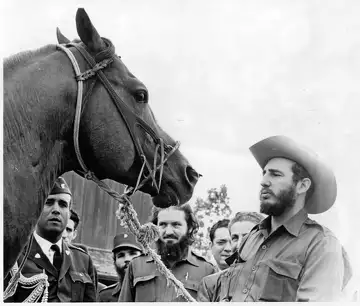
While he was in Houston he caught up with old friend Robert Ray McKeown, from Pasadena, who ran guns to Castro during the late ‘50s. In 1959 Jack Ruby made contact with McKeown. Ruby told him that he was "in with the Mafia and had a whole lot of jeeps he wanted to get to Castro." Ruby also wanted advice on how he could gain the release of a couple of friends imprisoned in Cuba. In September, 1963, two men arrived at McKeown's house. One man introduced himself as Lee Oswald (his friend was called Hernandez). Oswald said he was willing to pay $10,000 for four rifles, 300 Savage automatics and a telescopic sight. McKeown refused as he thought he was being set-up.
Same April 27, a banquet was later held (at the request of then-Senator Lyndon B. Johnson) with Castro as the guest of honor, attended by then-Mayor of Houston Lewis Cutrer, John B. Ferguson, oilman Frank Waters and some others.
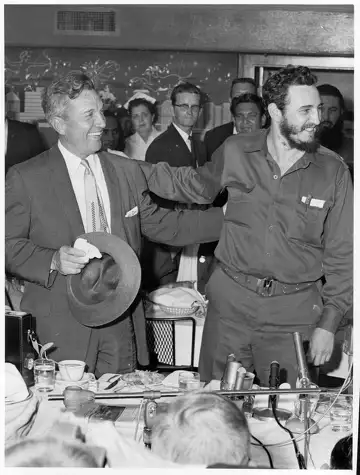
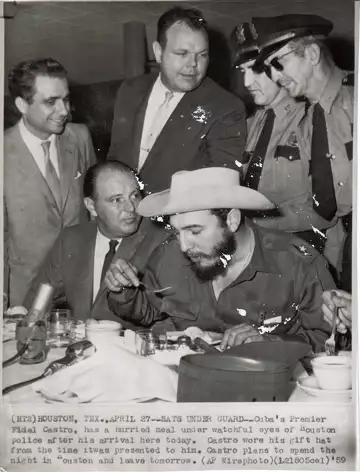
Jaycees in Havana
Virgil Wall, Jr. the businessman hosted the Castro brothers in Houston. In 1959, he was president of the Houston Junior Chamber of Commerce (Jaycees). Then-Sen. Lyndon Johnson had asked the Jaycees to invite Fidel Castro to Houston; U.S. politicians "wanted an apolitical group to deal with his visit," Wall said.
A week before Castro arrived, Wall and several other Houston businessmen journeyed to Havana to meet with the Cuban leader at the presidential palace.Once there, they were ushered into a Cadillac limousine. Thompson machine guns were strapped to the seats, and most of the rebels "had pistols stuck in their waistbands," Wall said. "It was almost like walking into the wild, wild West with a Spanish flavor."
Castro in Georgian SSR
It still mystery, how the Georgian leader Vasil Mzhavanadze could grotesquely portray Houston in Sukhumi (Soviet Abkhazia) before the Cuban missile crisis.

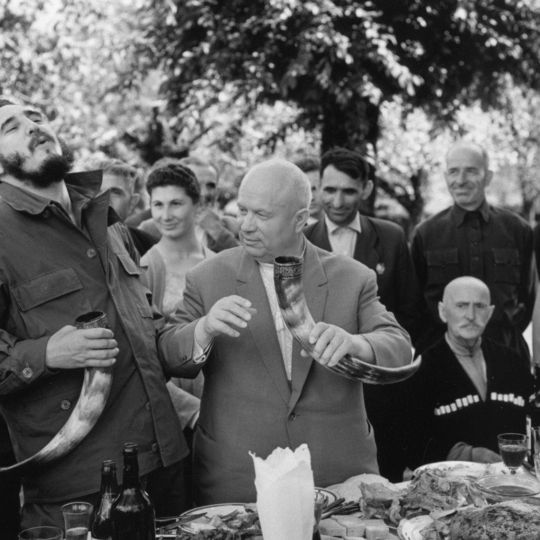
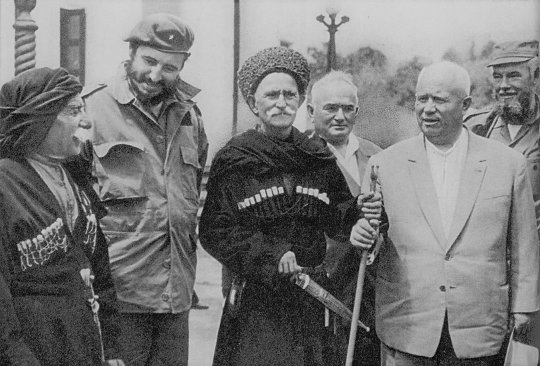
Jorge Risquet (far right). Castro sent him to work with the government of Congo-Brazzaville, while Che Guevara fought against CIA-backed mercenaries in Congo-Leopoldville.
0 notes
Text
The Case of the California Judge
By Juan Cruz, California State University Dominguez Hills Class of 2024
August 15, 2023

It’s common to hear criminal cases of murder that involve spouses, friends, coworkers, and groups of people. It’s rare, however, to hear a criminal case of murder that involves a sitting judge and his spouse. This is the case in Orange County, California as OC Superior Court Judge Jeffrey Ferguson is alleged to have killed his wife on August 3, 2023, in their residence. The 65-year-old woman was found with a gunshot wound that day and was pronounced deceased at the residence when officers responded to the shooting that day after 8 p.m. 1
The incident was alleged to have been related to a argument that occurred at a restaurant on August 3rd and continued onwards into their home in Anaheim. Judge Ferguson was alleged to have pointed his fingers towards his wife mimicking shooting at her. The victim told Ferguson when they got home and iterated to him, “why don’t you point a real gun at me?”, to which Ferguson shot at her chest with a pistol from his ankle holster. The son of both parents went on to call 911 and state that his father (Judge Ferguson) was drinking excessively and shot his mother. That same time, Judge Ferguson also called 911 but feint answering questions to the operator if he had shot his wife and requested an ambulance. He texted his court bailiff and clerk that, “I just lost it. I just shot my wife. I won’t be in tomorrow. I will be in custody. I’m so sorry.” 2 When officer arrived to the scene, they noticed that Ferguson smelled of alcohol and still had his ankle holster on him. The prosecutors alleged that on police body cameras that Ferguson was cussing and slurring his speech and saying statements such as “What the f—k did I … Well, I guess I’m done for a while” and “My son … My son… F—k me. What an a–hole I am, Jesus Christ” 3 Prosecutors in the case also state that when law enforcement searched the home, they found about 47 weapons, which included the murder weapon, and about 26,000 rounds of ammunition. All but one weapon were legally owned with the one in question being a rifle that was unaccounted for. 4 The judge spend one night in jail and was released on a $1 million bail with conditions stating that he must stay within Orange, Riverside and Los Angeles counties pending his trial along with wearing a GPS ankle monitor.
______________________________________________________________
https://www.cbsnews.com/news/jeffrey-ferguson-arrested-anaheim-judge-sheryl-ferguson/
https://www.nytimes.com/2023/08/11/us/california-judge-wife-murder.html
https://nypost.com/2023/08/14/california-judge-said-he-shot-his-wife-in-chilling-texts-court-docs/amp/
https://www.nytimes.com/2023/08/11/us/california-judge-wife-murder.html
0 notes